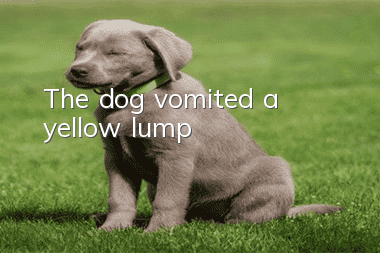Let the babies grow up healthy and healthy!

Some unscrupulous stores on the market only inform buyers that the puppies have received basic vaccinations without any proof. The proof must also be obtained by a doctor and issue an injection certificate and vaccine number. The lack of any vaccinations on puppies has resulted in many pets becoming ill after owners brought them home, resulting in an irreparable situation. Vaccine preventable diseases - rabies, Lyme disease, canine distemper, canine infectious hepatitis, canine infectious bronchitis, canine parainfluenza, canine parvovirus enteritis (canine hemorrhagic enteritis), canine coronavirus enteritis, canine leptospira, hemorrhagic jaundice leptospira, cold typhoid leptospira, pomona leptospira.
1. Canine distemper (Canine distemper)
【Infection route】
Airborne infection is the route of infection. Indirect or direct contact with eye and nasal secretions of infected dogs can also infect healthy dogs.
【Clinical symptoms】
Initial symptoms include high fever, anorexia, yellow purulent discharge from the eyes and nose, vomiting (vomiting white foam), diarrhea, and hardening of the soles of the feet. Later stages vary depending on the virus, resulting in convulsions and uncoordinated limbs. , tremors, paralysis and other symptoms, the mortality rate of adult dogs is as high as 50%, and the mortality rate of puppies is even higher.
The affected dog is lucky to survive this test, but it may also be accompanied by sequelae: partial or total paralysis, permanent damage to the nervous system such as smell, hearing, and vision.
【Treatment】
Currently, there are no effective drugs for treatment, nor are there any drugs that can prevent the virus from destroying the immune and nervous systems. Doctors can only provide supportive therapy: infusion therapy, nutritional injections, antibiotic treatment, antiviral serum, and sedation to relieve the symptoms of pumping and accumulation.
2. Canine parvovirus enteritis or canine hemorrhagic enteritis (Canine parvovirus)
【Infection route】
Infection is through fecal contact. Objects that have been in contact with feces (e.g. cages, clothes, shoes) can also be used as vectors of infection. If the environment permits, the virus can survive in a suitable environment for up to 5 months.
【Clinical symptoms】
The incubation period is 4 to 5 days. Symptoms include lethargy, high fever, vomiting, diarrhea (bloody diarrhea), anorexia, physical weakness, weight loss, etc. The virus mainly infects vigorously dividing cell tissues. Myocardial cells divide most vigorously during puppyhood. If the infected puppy dies,The rate increases to 70%, and the remaining 30% of rescued puppies may be accompanied by heart disease, leading to death from heart failure months or years later.
【Treatment】
There is currently no specific medicine to treat this disease. The virus can cause severe vomiting and diarrhea in puppies, causing dehydration. Food and water cannot be given immediately if the vomiting is severe. Intravenous infusion should be used to replenish water and nutrition, and antibiotics should be given to prevent secondary infections, as well as administer Give interferon and immunoglobulin.
- How is dog dermatitis treated?
- What's wrong with the blood on the dog's butt?
- What are the ways to prevent dogs from getting skin diseases in summer? Keep dogs away from skin diseases!
- How does a novice teach a dog to go to the toilet? Teach a dog to go to the toilet at a fixed point!
- What should you pay attention to when potty training your Doberman?
- Border Collie keeps barking at night to disturb people's rest? How to solve it?
- How to identify and select French Bulldogs
- How to deal with food poisoning in pet dogs
- Causes of panting in dogs
- How to train an Australian Cattle Dog



